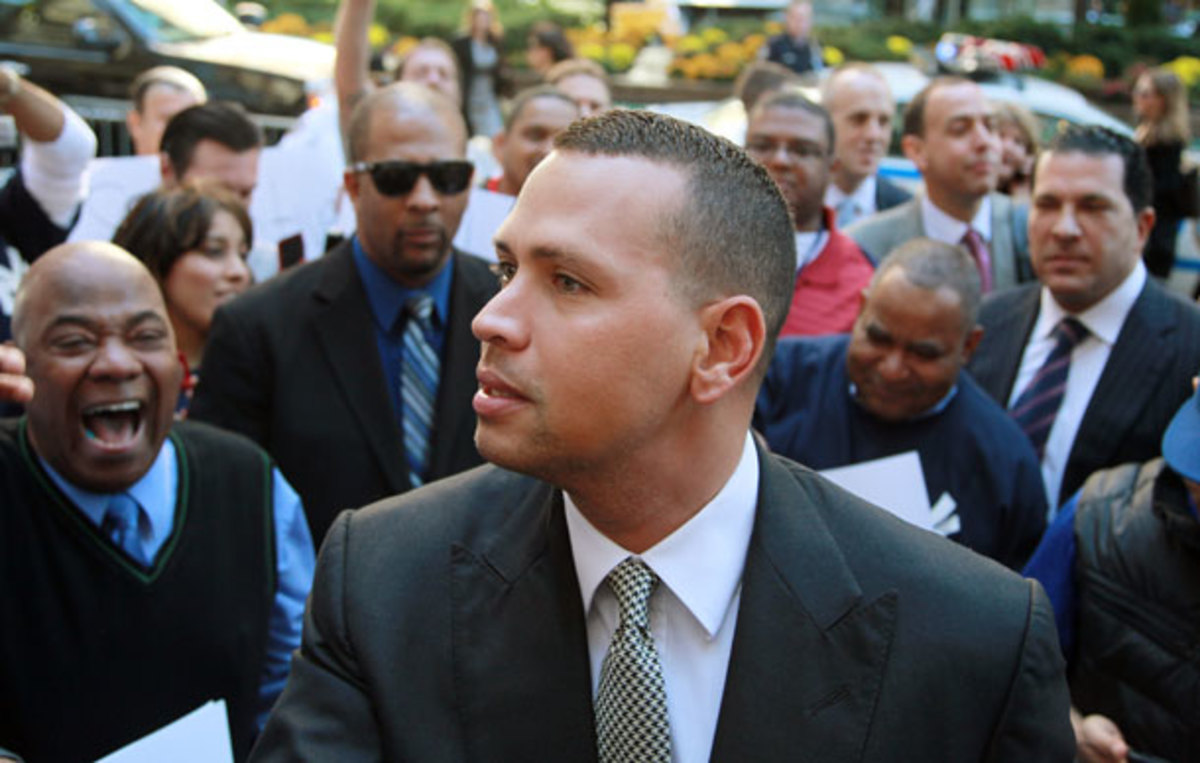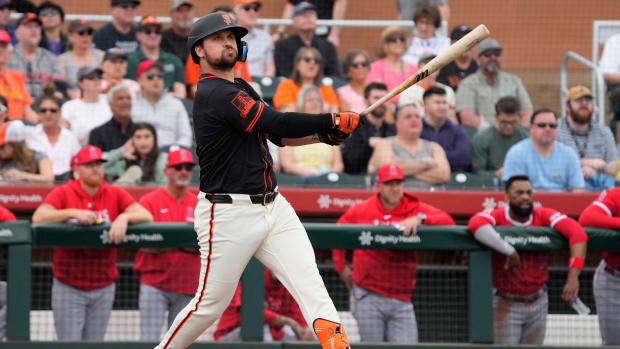New York Times report alleges A-Rod tested positive for banned stimulant in 2006
Alex Rodriguez is appealing his 211-game suspension with a decision expected before year's end. (David Karp/AP)
In a major front-page story in Monday morning's edition, the New York Times has put forth its findings from months of investigation into the allegations being levied by both sides in Alex Rodriguez's ongoing arbitration proceedings against Major League Baseball. Among the notable new details is the fact that, according to "two people involved with baseball's collectively bargained drug-testing program," Rodriguez tested positive for a banned stimulant in 2006.
The article also details some of the hundreds of thousands of dollars spent by both sides to obtain evidence and the cooperation of witnesses, as well as some of the alleged threats used by MLB to get witnesses to cooperate. Those are just some of the other attention-grabbing details of a story in which neither MLB nor Rodriguez's camp comes out looking particularly good.
Assuming Rodriguez did indeed test positive for stimulants in 2006, that's actually just a footnote among all the rest of the cloak-and-dagger absurdity detailed by the Times. Stimulants are considered separate from performance enhancing drugs under the Joint Drug Prevention and Treatment Program, with a separate schedule of discipline which requires no suspension or public announcement following a first positive test such as Rodriguez's in 2006.
Instead, a first positive test for simulants triggers a series of subsequent tests over the following year. Given that A-Rod was never suspended for stimulants, it is safe to assume he passed those tests. Even if Rodriguez was a chronic user of banned stimulants, this case would not have built to such an extreme. Rather, it is about MLB's allegations of hardcore PED use on Rodriguez's part and his denial of the same, as well as the player's allegations of unfair treatment and illegal investigative tactics on the part of Major League Baseball. As fascinating as the New York Times story is -- and it is definitely worth a read -- it gets us no closer to the truth on either matter.




































